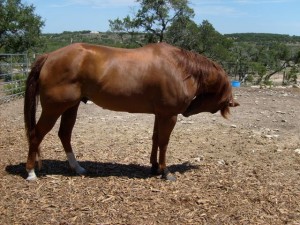 As an osteopath I am very concerned about adhesions and the negative effects they have on the horse. I spend much of my time releasing adhesions so thought it would be good to explore exactly what they are and why they are so bad. An adhesion is an area of connective tissue that is not moving as it should in relation to the other connective tissues it contacts. Adhesions cause trouble because anytime even the slightest restriction occurs in one area of the body it has consequences on other areas of the body.
As an osteopath I am very concerned about adhesions and the negative effects they have on the horse. I spend much of my time releasing adhesions so thought it would be good to explore exactly what they are and why they are so bad. An adhesion is an area of connective tissue that is not moving as it should in relation to the other connective tissues it contacts. Adhesions cause trouble because anytime even the slightest restriction occurs in one area of the body it has consequences on other areas of the body.
Scars after injury are the most well known type of adhesion but injury is not the only thing that causes adhesions. Dehydration of the tissues can cause adhesions. Dehydration of the tissue can be caused by generalized lack of moisture in the body or lack of blood flow to a certain area. Lack of blood flow denies nutrition and can also cause connective tissues to lose integrity which can lead to adhesions. Inflammation from any cause can result in adhesions between tissues in the area.
What is an adhesion?
An adhesion is an area of connective tissue that is stuck to the other connective tissues in the area.
Why does an adhesion cause trouble?
An adhesion restricts movement and this will have a chain reaction on other connective tissues in the body.
Causes of adhesions:
Trauma from injury or overwork
Dehydration
Lack of nutrition to an area
Inflammation
Adhesions in the musculo skeletal system often show up as a swinging leg lameness. The mechanical tightness in the adhered tissues causes one leg to travel a shorter distance than the other free leg. Tight backs and necks are also caused by adhesions of the connective tissues surrounding the spine.
Many people don’t realize that adhesions can also occur around the internal organs. One example is adhesions that form in the groin area after routine gelding. These gelding adhesions may not cause much problem initially but over the years the initial area of restriction grows and if not released the resulting pull can affect the movement of the sacrum and pelvis. Mares can also get adhesions around an ovary or the uterus and this tightness results in sore backs and ribs. Stomach ulcers can be severe enough to cause the outer lining of the stomach to adhere to the diaphragm with resultant restriction of breathing.
The best way to prevent adhesions is to keep all the tissues well hydrated and nourished. Avoid overwork which causes trauma to the tissues. Address all inflammation with natural antioxidants such as Citrus C/Q or a powdered algae blend . Encourage healing of injuries with a minimum of scar tissue by using products such as this stem cell support supplement which supplies the body with the nutrition it needs to manufacture stem cells. Stem cells allow the body to heal injury with new healthy tissue rather than scar tissue. This supplement is especially valuable in hard to heal tissues such as tendons and ligaments. Have regular body work done to release minor adhesions before they involve other tissues.
Symptoms of adhesions:
Swinging leg lameness
Tight neck or back
Chronic tightness in the sacrum and pelvis of geldings
Tight lower backs and ribs of mares
Breathing problems secondary to restriction of the diaphragm
Prevention of adhesions:
Keep tissues well hydrated and nourished
Address inflammation with natural antioxidants
Encourage injuries to heal with minimum scar tissue
Have body work done regularly to release minor adhesions
Adhesions may not be obvious but they can be detected by a trained body worker or osteopath. Gait deficits and abnormal posture are immediate clues that adhesions are present. Rib pain and restricted breathing are also indicators of internal adhesions. Healthy tissue is less likely to form adhesions but when they occur your horse will feel and work much better once they are released. Madalyn
If you liked this post, please leave a comment or get more great holistic horse info at Holistic Horsekeeping, Horse Harmony Test, Horse Harmony, and on Twitter.
How do you determine if your horse has adhesions or some other joint, muscle, tendon issue? My horse lopes “stiff legged” at times. He has difficulty picking up his left lead but he actually canters smoother to the left than he does to the right. I’ve had him adjusted and she seems to work mostly on his ribs. He can be grumpy at times. I recently (month?) started him on SBGA. I’ve seen improvement in coat and hooves. I’ve been told he would benefit from magnesium. Not sure if the supplementing can do anything for his gaits.
An osteopath will be able to determine possible internal adhesions by examining the spine of your horse. When 3 or more vertebral segments are affected this suggests an internal problem. By looking at the nerves involved with the affected segments the osteopath can determine which organs are involved. For example, it is not unusual for a horse to have adhesions around the bladder from bruising during competition. This would show up in the lumbar vertebral segments L2-4. If the kidneys are affected then the lower thoracic and upper lumbars are involved. Great question. Madalyn